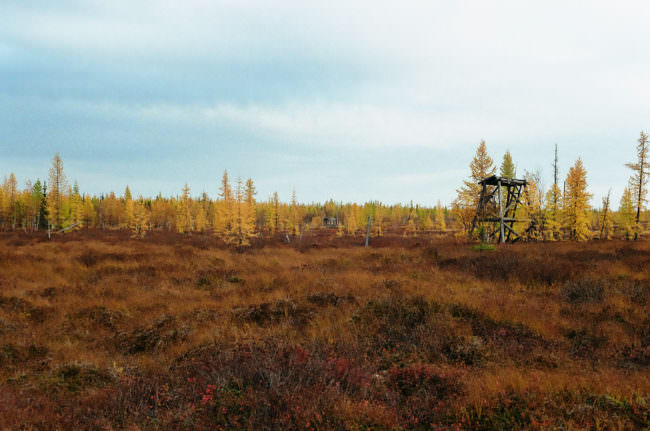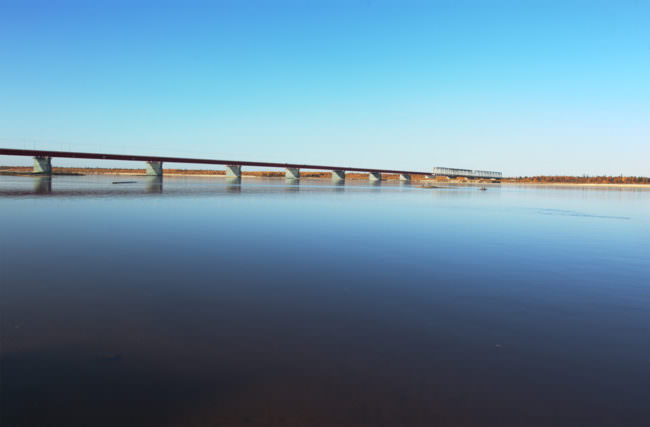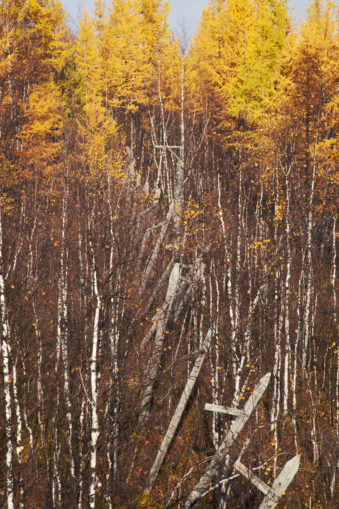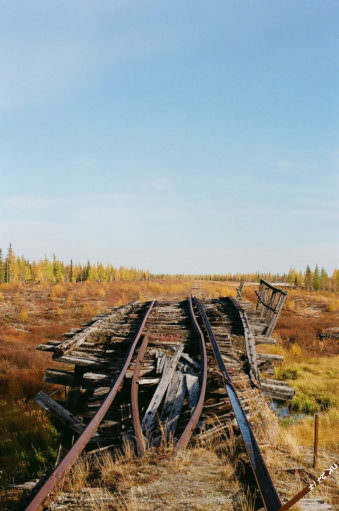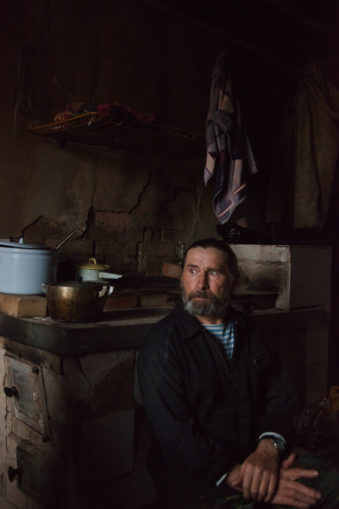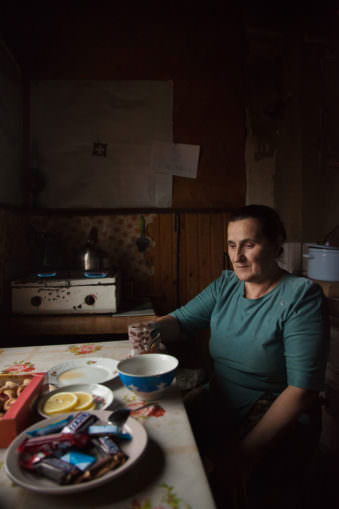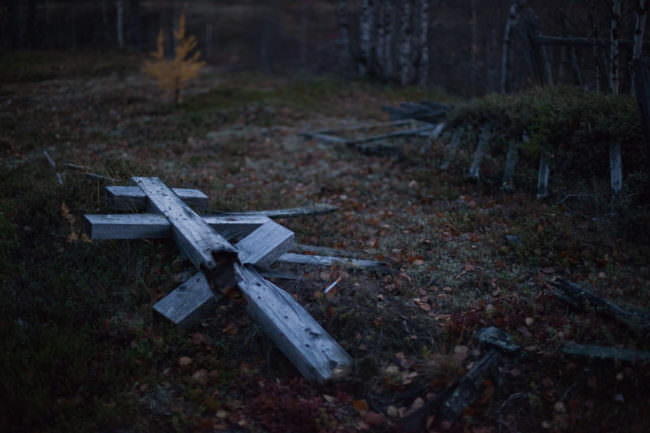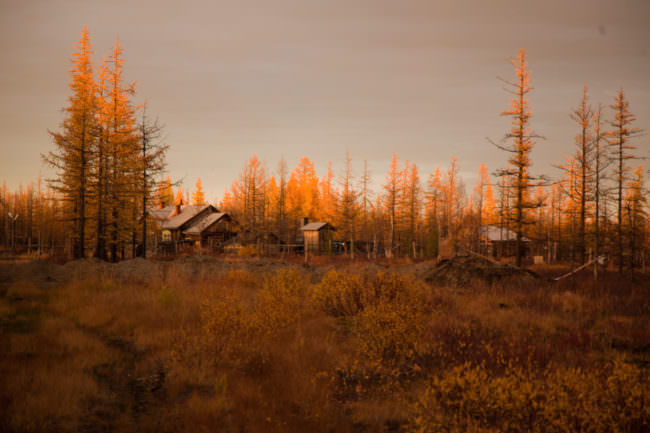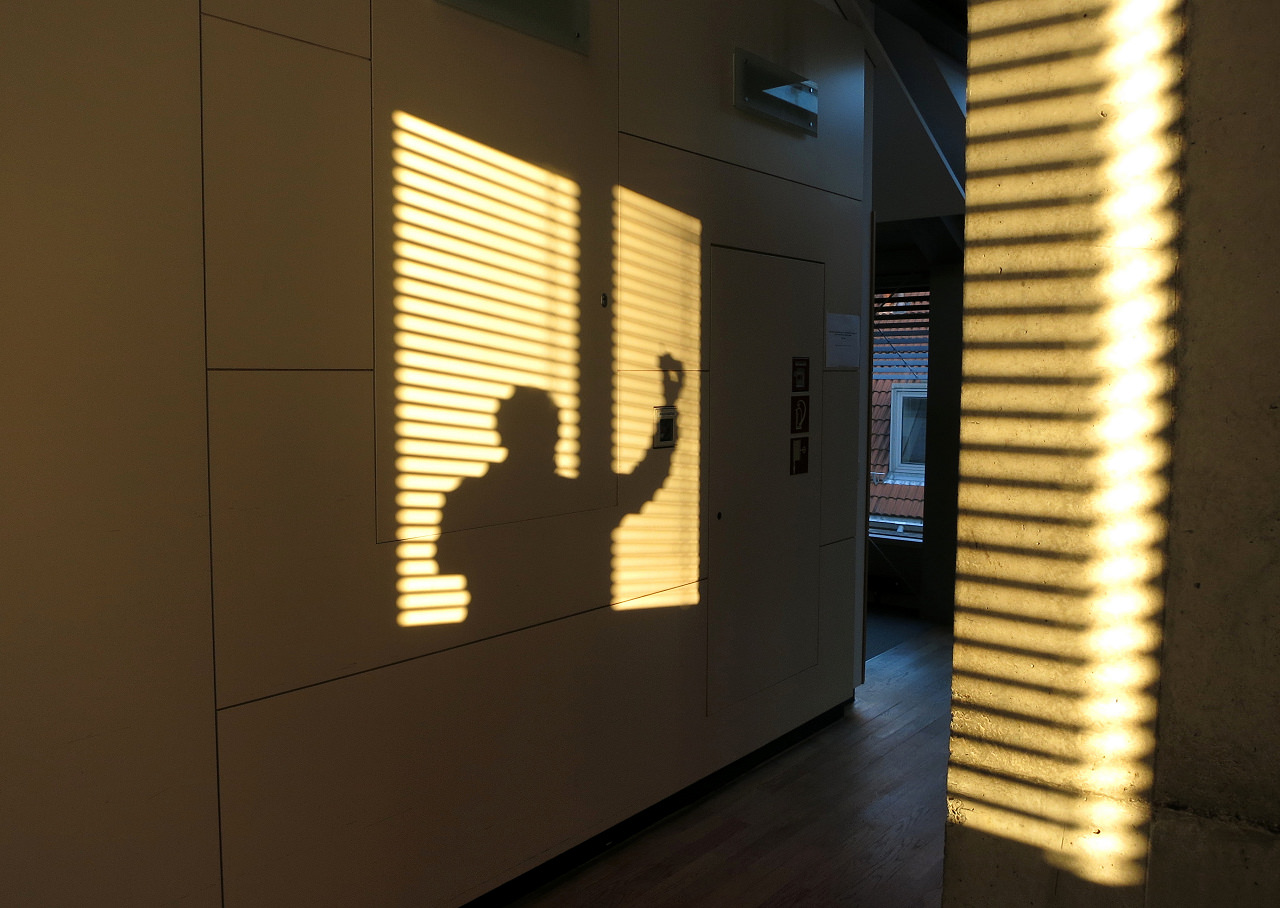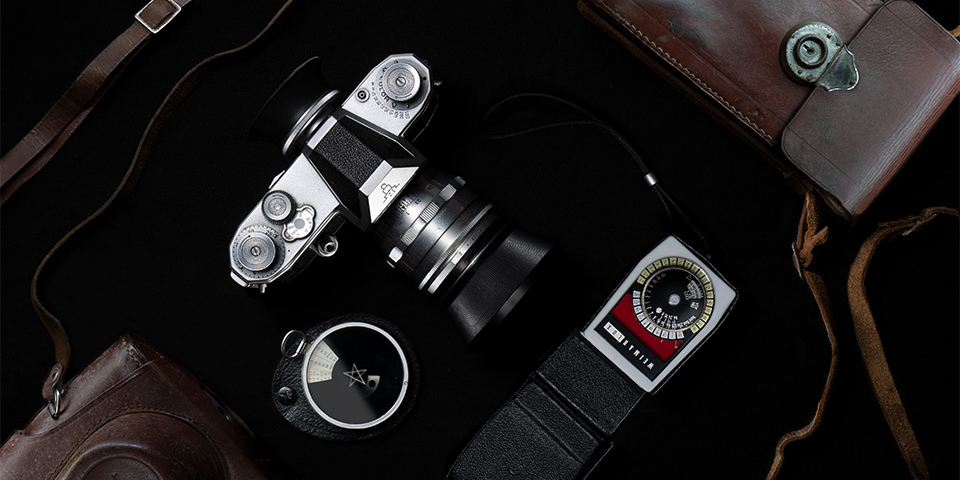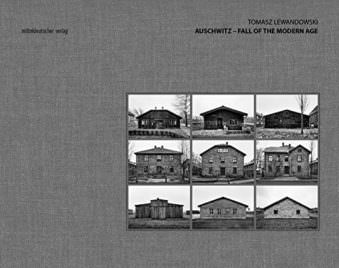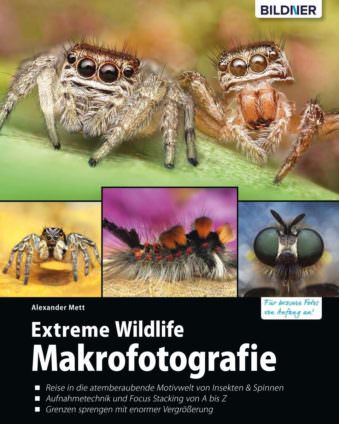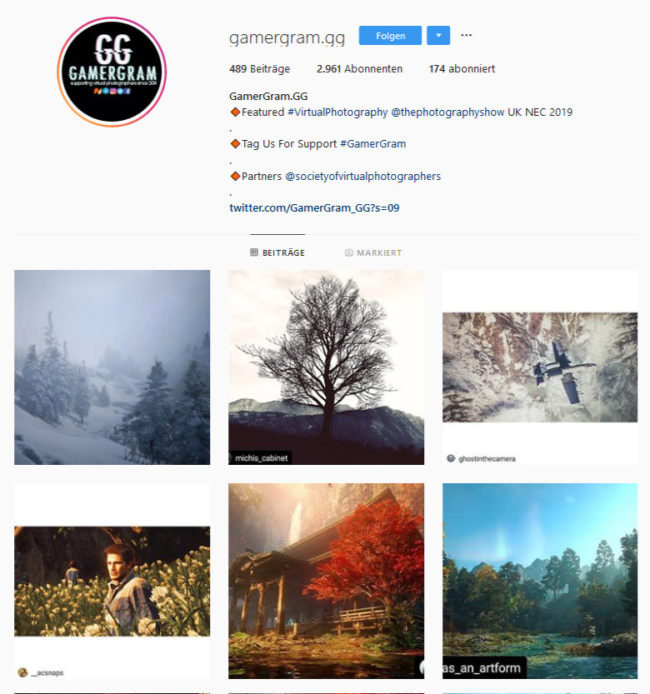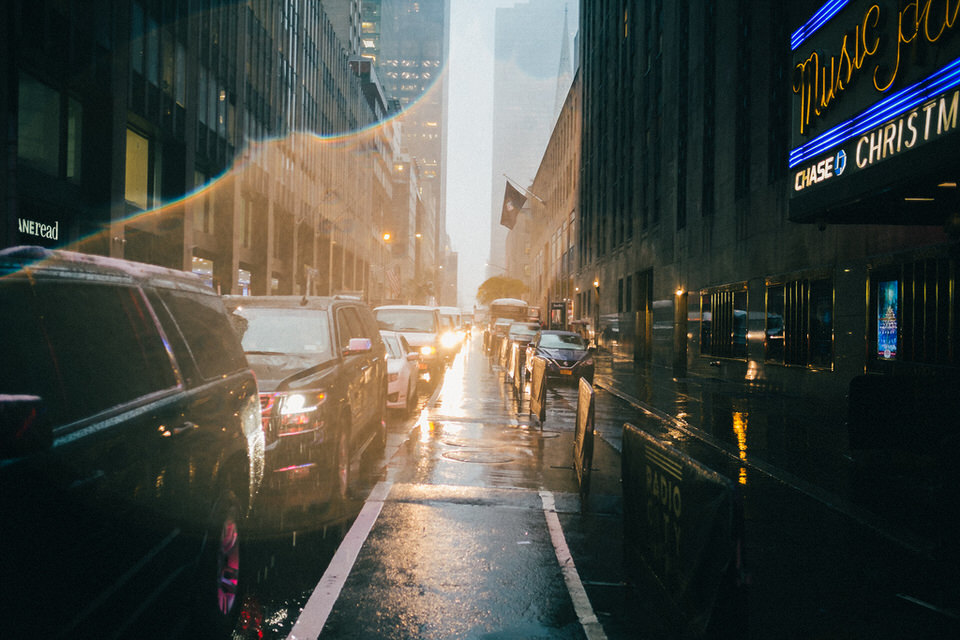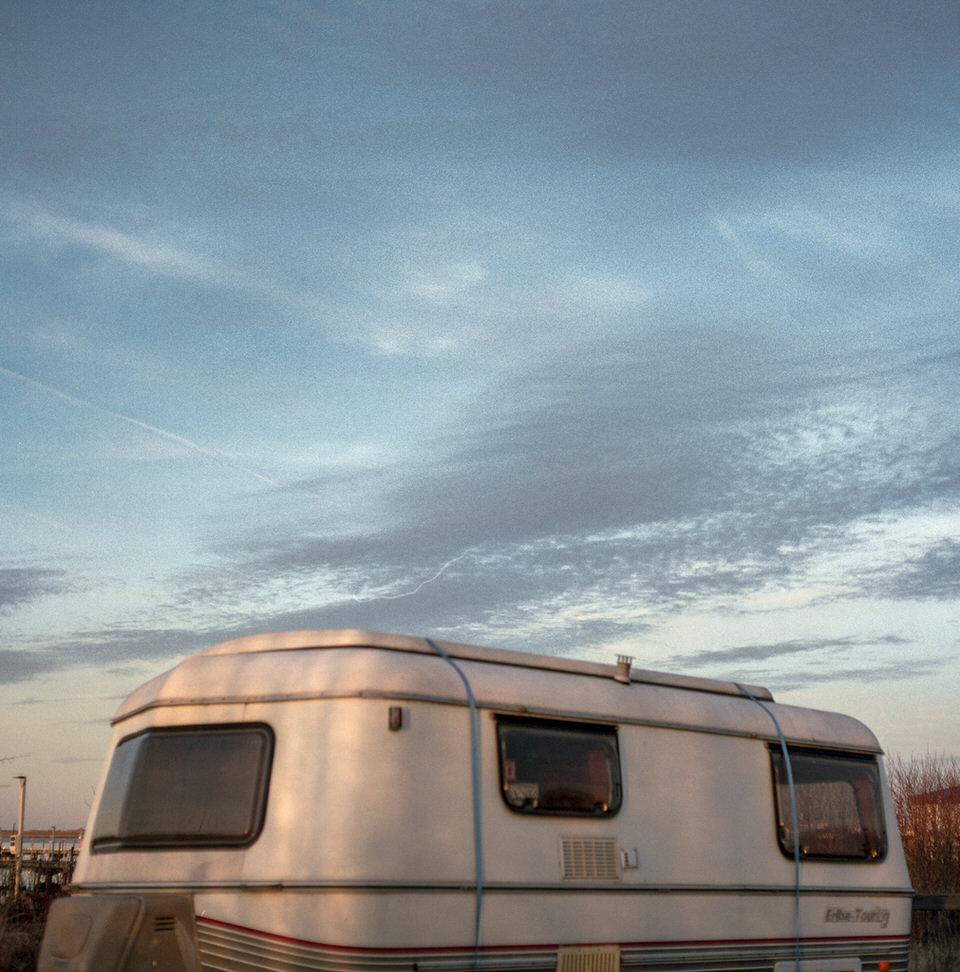Ghosts along the dead track
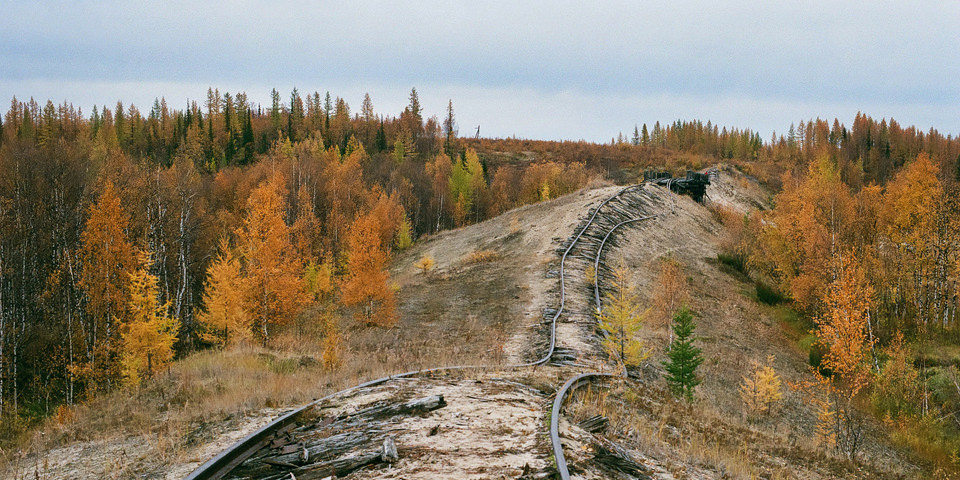
Ein Beitrag von: Zorana Musikic
In Ghosts along the dead track mache ich mich auf die Suche nach den Geistern der Geschichte, entlang der Schienen der Polarkreiseisenbahn, einem der größenwahnsinnigsten Bauprojekte Stalins, als strategische Bahn geplant, die zu einem geplanten sowjetischen Kriegsmarine-Stützpunkt führen sollte – für den Fall eines Angriffs der USA über die Beringstraße.
1459 km lang sollte die Strecke Tschum–Igarka werden und vom Ob bis zum Jenissei über den Permafrostboden führen. Von 1947 bis 1953 arbeiteten geschätzt 300.000 Gulag-Gefangene am Bau der Bahn, die einem Drittel dieser Menschen ihr Leben gekostet haben soll – bei neun Monaten Schnee im Jahr und Temperaturen bis -50 °C. Das Gulag-Projekt trug die Bezeichnungen Nummer 501 und Nummer 503.
Bis zu Stalins Tod im Sommer 1953 wurden knapp 600 km der Trasse fertiggestellt. Der Weiterbau wurde vom Kreml umgehend gestoppt und nur das knapp 200 km lange Teilstück Tschum–Labytnangi in Betrieb genommen. In den sechziger Jahren erhielt die Teilstrecke Nadym–Urengoi große Bedeutung, als bei Urengoi das zweitgrößte Erdgasvorkommen der Welt entdeckt wurde. Die verlassene Strecke wurde reaktiviert und bis zum Hafen von Jamburg am Ob-Busen verlängert. Alle anderen Teilabschnitte fielen in einen eisigen Dornröschenschlaf.
Hier bin ich letzten September gestartet, südlich der Stadt Nadym, wo der gleichnamige Fluss von einer Reihe von Pipelines gekreuzt wird, die von den nordwestsibirischen Erdgas- und Erdölfeldern in den europäischen Teil Russlands bzw. weiter nach Westeuropa führen und bin entlang der Bahntrasse bis zum ehemaligen Bahnhof und Lager Jarudei gelangt.
Begleitet hat mich Vadim Gritsenko, Historiker aus Nadym und ein sibirischer Don Qixote der Polarkreisbahn. Seit Jahrzehnten arbeitet er daran, ein Museum, eine Gedenkstätte aufzubauen, sammelt Artefakte, dokumentiert, schreibt Bücher, versucht die Behörden von der historischen Relevanz zu überzeugen – erfolglos.
Immer noch liegt der größte Teil der Polarkreiseisenbahn nie genutzt, verfallen und von der Vegetation überwuchert in der sibirischen Tundra – die meiste Zeit des Jahres verborgen unter einer Schneedecke. Noch zeugen entlang der Trasse Wachtürme, Lager und Gräber von der Geschichte des Baus. Jahrzehntelang hat sich außer ein paar Abenteurer*innen – und Vadim – niemand für die Strecke interessiert.
Doch 2011 bekam ein spanisches Unternehmen den Auftrag für den Bau des 390 km langen Abschnitts Labytnangi–Nadym. Damit soll, fast 70 Jahre später, der mittlere Teil des sogenannten Abschnitt „501“ von Stalins „Toter Trasse“ in Betrieb genommen werden. Der Wiederaufbau umfasst auch den Bau einer 2,5 km langen Ob-Brücke und der 1,3 km langen Brücke für Auto- und Schienenverkehr über den Nadym. Im September 2015 wurde die Autobrücke eröffnet.
Auch die Deutsche Bahn steht derzeit in Verhandlungen, an dem 4 Milliarden Euro schweren Großbauprojekt teilzunehmen. Die Bahnlinie wird dem Abtransport von Erzen, Öl und Gas dienen, 24 Millionen Tonnen Rohstoffe sollen hier jährlich über die Gleise rollen. Eine Fertigstellung der gesamten Bahnstrecke Salechard–Igarka ist ebenfalls für die nahe Zukunft geplant, um die großen Bodenschätze der arktischen Gebiete besser erschließen zu können.
Mit den neuen Bauvorhaben und dem Sterben der letzten Zeitzeug*innen beginnen nun auch die letzten topografisch verortbaren Zeugnisse zu weichen – und werden innerhalb weniger Jahre vom neuen Bahnprojekt überschrieben sein.
„Ghosts along the dead track“ ist daher eigentlich ein antizyklischer Lauf aus der Gegenwart in die Vergangenheit gegen die Zeit – ein Versuch, die jahrzehntelang im Eis der sibirischen Tundra konservierten Überreste von Stalins „großartigem Plan zur Transformation der Natur“ zu dokumentieren, während das neue multinationale Bahngroßprojekt schon begonnen hat, sich seinen Weg über den Permafrostboden zu bahnen.
Die Arbeit reflektiert mit künstlerischen Mitteln die fortlaufende Geschichte menschlicher Hybris und ihrer Opfer – entlang der Strecke einer Eisenbahn: von Stalin über Putin zu Gazprom, von der Sowjetunion bis zu unserer heutigen globalisierten Welt, vom Kalter Krieg bis zur Klimaerwärmung. Es wird eine Arbeit über Mensch und Natur, über Zivilisation und Fortschritt, über Industrie und Kapitalismus sein; eine Reise durch die menschenleere Tundra, der Heimat nomadisch lebender Menschen bis hin zu den Industriestädten und Gasfeldern der größten Erdgasvorkommnissen der Erde.
In einem Arrangement aus Inszenierungen, Portraits und dokumentarischen Aufnahmen, aber auch gesammelten Texten, Archivfotografien und -dokumenten möchte ich nicht nur die Geschichte der Stalinbahn erzählen, bevor sie vom nächsten Kapitel der Geschichte für immer überschrieben wird, sondern auch die unserer globalisierten Gegenwart.
Nun steht meine zweite Reise bevor – entlang der westlichen Hälfte der Linie 501, beginnend bei Salechard durch den sibirischen Winter. Die Eisenbahnstrecke soll dabei wieder die räumliche Achse meiner Reise vorgeben – ein kleines Teilstück ist mit dem Zug befahrbar, die restliche Strecke ist nur per Trekol, einer Art Monster-Jeep, zurücklegbar.
Dieses Mal habe ich die Chance, mich im April für eine Woche nomadisch lebender Menschen anzuschließen, mit ihnen und ihrer Rentierherde von über 10.000 Tieren zwischen Salechard und Nadym sowie auf der Jamal-Halbinsel unterwegs zu sein und ihren Alltag zu dokumentieren. Danach wird mich die Reise entlang der Bahn nach Nowy Urengoi führen, einem der wichtigsten Standorte von Gazprom. Und schließlich möchte ich versuchen, das alte Lokomotivdepot in Jermakowo zu erreichen.
Ermöglicht werden mir die beiden Reise durch das Grenzgänger-Stipendium der Robert-Bosch-Stiftung. Für die zweite Reise habe ich eine Co-Finanzierung durch Crowdfunding gestartet, da das Stipendium zwar die „normalen“ Reisekosten sowie Unterkunft und Verpflegung abdeckt, aber nicht die Ausgaben, die nötig sind, um überall dorthin zu kommen, wo man mit regulären Verkehrsmitteln unterwegs im arktischen Eis nicht hinkommt.
kwerfeldein – Magazin für Fotografie https://ift.tt/2V7zXs8
Sourced by Time Trap Photography sharing the best photography tips, news and tricks throughout the industry. Time Trap Photography is dedicated to freezing those special moments in life that can be revisited and admired for generations to come. - Shannon Bourque
Please visit our main site for booking availability and rates.

Receive valuable industry knowledge delivered free to your email each day.


